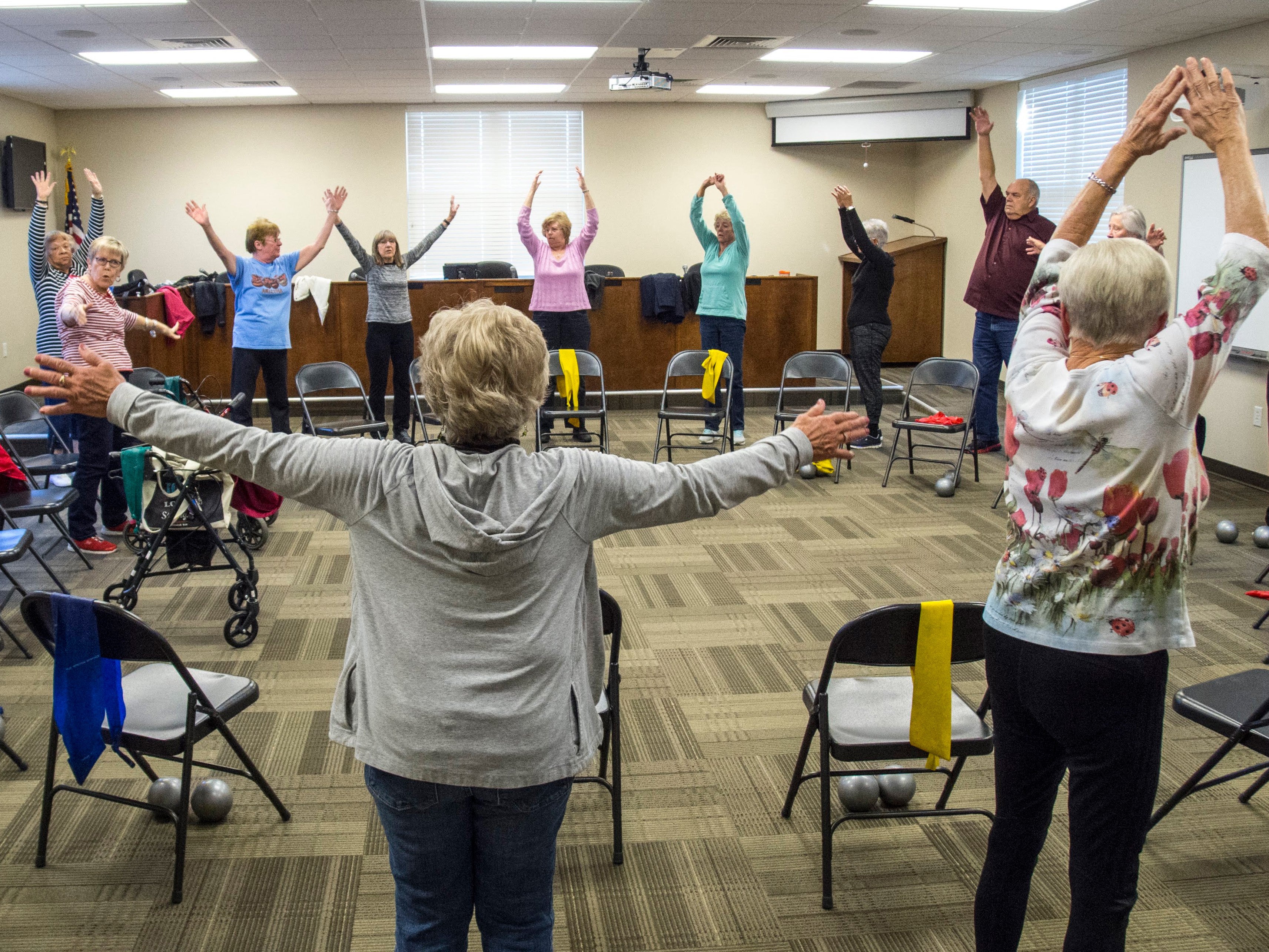
Fit and Fall Proof™ is on its way towards national recognition as a best practice program in community-based exercise thanks to a recent publication by researchers at Boise State University. The study, published in Frontiers in Public Health, demonstrates the program’s effectiveness in reducing fall risk and social isolation, and it’s adaptability to both rural and urban communities across the state of Idaho.
Falling is a leading cause of unintentional injury and death among older adults in Idaho, with related medical costs reaching $253 million annually. Loss of independence, anxiety, social isolation, and pain and suffering are common consequences of falls.
The publication documents the results of a 6-month study of Fit and Fall Proof™ including physical, social, and emotional outcomes among participants. The program is funded by the Idaho Department of Health and Welfare and coordinated by Idaho’s seven local public health districts. Taught by local volunteers at approximately 130 sites across the state, the program brings physical activity to underserved populations – including rural areas where no other exercise programs exist, those for whom exercise programs are cost prohibitive, and for those in need of modifications for various abilities.
Researchers found that health benefits were comparable to those seen after working with paid certified trainers and physiotherapists. Participants have identified benefits such as weight loss, increased stability, and reducing medications. Beyond the physical benefits, social connectedness has risen to the top as the most impactful result for many participants, according to Katie Lamansky, Safe + Healthy Communities program manager who oversees Fit and Fall Proof™at Idaho Department of Health and Welfare.
“When asked what is the best part of the program, or what do you like most, more often than not participants will say, it’s the friendships,” said Lamansky.
In many communities, Fit and Fall Proof™ participants find ways to look out for one another, such as keeping a phone list to check in if a regular participant doesn’t show up for class, or providing rides to class for a participant who doesn’t drive.
“Many of Idaho’s small, rural communities are seeing large increases in their population over age 65,” said Lamansky. “Fit and Fall Proof™ gives [residents] the opportunity to get out of their home and connect with their community.”
Because it is volunteer-led, the program also provides training opportunities for older adults to serve their communities as class leaders, which improves their sense of purpose and social well-being.
Michelle Arnett, one of the study’s researchers, says the program’s adaptability has been key to its success. The program is held in community centers, senior centers, churches, libraries, apartment complexes, and fire stations.
“It’s transferable to any setting. There’s really nothing out there that looks like this, and has such a long-standing record of sustainability, scalability, and benefits,” said Arnett.
The researchers anticipate that the publication will increase funding opportunities for the program, and will enable more programs modeled after Fit and Fall Proof™ to spring up across the country.
“Every time we present at conferences people ask, ‘How do we do this in our state?’” said Arnett. “Getting this research published is a huge step.”